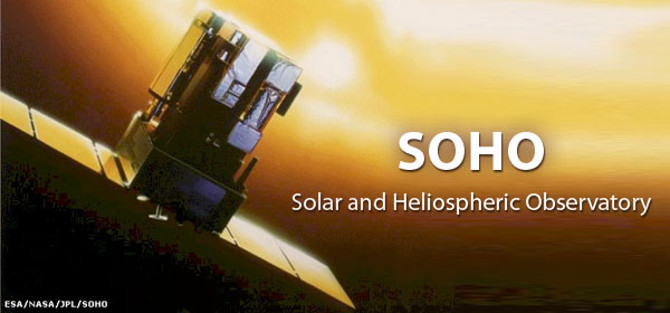June 25: Dark day of aerospace
June 25 is considered a dark day of aerospace with a series of accidents.
June 25, 1998: Missing mission observing the sun and Japan SOHO
On December 2, 1995, NASA and ESA successfully launched SOHO (Solar and Heliopheric Observatory) spacecraft observing the Sun and Japan. SOHO ships in orbit around the Sun, SOHO's position fluctuates around the Lagrange L1 equilibrium point created by the Sun and Earth.

On June 25, 1998, after a series of incidents, SOHO ships fell into an emergency state and then completely lost contact with the ground control center. Scientists predict that a certain incident has caused the ship's entire electrical system to be shut down. At that time no one was able to locate the ship.
When all hope is about to die, suddenly the battery backup system on the ship works again after a few days of being recharged by solar power . The ship's control signal is also activated again, scientists now carefully coordinate the ship's limited energy to help bring it back into orbit. After nearly a week, SOHO was operating normally and continuing its mission on the orbit of the Sun.
Scientists believe that they were very lucky when the SOHO ship did not crash toward the Sun after losing control. The cause of this incident so far has not been clarified.
June 25, 1997: The accident on Mir space station
Mir space station, also known as Russia's space station, is one of the most crashed space stations in aerospace history. However, the accident that happened in 1997 was a nightmare and caused very irreparable damage on this space station.
It was on June 25, 1997, when a spacecraft carrying goods onto the Mir station during connection with the space station crashed a module on the station. The collision created a large hole that caused the pressure in the space station to abruptly reduce and damage the solar panels.

The accident on June 25, 1997 caused the Mir station to be seriously damaged.
The astronauts present on the Mir space station then had to shut down this entire module, cutting both electrical and data connections. It caused the entire station to suffer from a serious energy shortage. The station's energy was then reduced by more than half, causing astronauts to decide to disconnect the orbiting engine to concentrate life-sustaining power.
Mir space station was then washed up in the universe. The station scientists had to make efforts to overcome and repair within a week to reconnect the solar power system and panels, to bring the space station back to orbit.
- New explanation of the origin of dark matter
- Each animal has the secret to seeing in the dark differently
- Japan wants to build the world's largest machine
- 11 mysteries about dark matter have not been answered yet
- The mystery of dark energy
- Earth is losing dark matter
- Peru first self-launched missile launcher
- Found signs of dark matter
- Revealing the first image of dark matter
- Russia will spend $ 50 billion on the aerospace industry
- The physics king Hawking talks about dark matter
- Why stay up late or get dark?
 Biography of hero Vu A Dinh
Biography of hero Vu A Dinh History of hematology
History of hematology Who is Mr. Tam Da 'Phuc-Loc-Tho' and what does it mean?
Who is Mr. Tam Da 'Phuc-Loc-Tho' and what does it mean? Unbelievable facts about the history of the oil and gas industry: Gasoline used to be cheaper than water, so abundant that it had to be dumped into the river...
Unbelievable facts about the history of the oil and gas industry: Gasoline used to be cheaper than water, so abundant that it had to be dumped into the river...